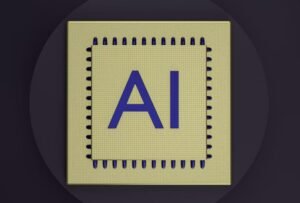Open AI for Dummies
Artificial Intelligence (AI) has transformed numerous industries and continues to impact our daily lives. One of the most promising developments in this field is Open AI, which aims to create AI that benefits all of humanity. In this article, we will delve into the basics of Open AI and explore its potential applications.
Key Takeaways
- Open AI is an initiative focused on creating AI that benefits everyone.
- It aims to ensure the development and deployment of AI are safe and align with human values.
- Open AI provides tools, research, and models to enable the community to advance AI technology.
- It has diverse applications ranging from language translation to robotics.
- As an open-source project, Open AI encourages collaboration and contributions from the global AI community.
Understanding Open AI
Open AI is a research organization that aims to build safe and beneficial AGI, which stands for Artificial General Intelligence. AGI refers to highly autonomous systems that outperform humans in most economically valuable work. Unlike Narrow AI, which is designed for specific tasks, AGI possesses the ability to understand and perform any intellectual task that a human can do.
Open AI‘s mission is to ensure that AGI benefits all of humanity. To accomplish this, Open AI commits to the following fundamental principles:
- Broadly distributed benefits: Open AI aims to use any influence it obtains over AGI’s deployment for the benefit of all, prioritizing humanity’s collective interests.
- Long-term safety: Open AI is dedicated to conducting research to make AGI safe and to promote the broad adoption of such research across the AI community.
- Technical leadership: Open AI strives to be at the forefront of AI capabilities to effectively address AGI’s societal impact.
- Cooperative orientation: Open AI actively cooperates with other research and policy institutions to create a global community that addresses AGI’s challenges.
Applications of Open AI
Open AI has various applications across several domains. Let’s explore some of them:
1. Language Understanding and Generation
Open AI‘s models, such as GPT (Generative Pre-trained Transformer), have made significant advancements in natural language processing. These models can understand and generate human-like text, enabling applications like language translation, content creation, and chatbots.
Open AI‘s language models are trained on massive amounts of text data, allowing them to generate coherent and contextually relevant responses.
2. Robotics and Automation
Open AI‘s research extends to robotics, where intelligent machines can be developed to perform complex tasks with human-like dexterity. This has implications in manufacturing, healthcare, and many other industries, assisting in various repetitive or dangerous tasks.
Open AI envisions a future with robots that can assist humans in a wide range of physical tasks, resulting in increased efficiency and improved safety.
3. Scientific Research and Discoveries
AI, particularly Open AI, aids scientific research by accelerating the process of experimentation and analysis. AI models have been trained on vast amounts of scientific literature, enabling them to assist researchers in generating hypotheses, analyzing complex data, and uncovering pattern.
Open AI‘s contributions to scientific research have the potential to revolutionize our understanding of fields such as biology, chemistry, and physics.
Open AI Collaborations
Open AI believes in fostering collaboration within the AI community. They actively support researchers and developers by providing open-source tools, research papers, and pretrained models. This open-source approach encourages the sharing of knowledge and innovation across the global AI community.
An exciting aspect of Open AI‘s collaborative nature is its partnerships with institutions, governments, and other organizations, collectively working towards AI advancements and addressing ethical considerations.
Data Points and Insights
| Category | Contributions | Impact |
|---|---|---|
| Papers | 1000+ | Advancing research and knowledge sharing within the AI community. |
| Pretrained Models | Multiple | Providing access to powerful AI models for various applications. |
| Research Tools | Open-source | Empowering developers and researchers to build upon existing AI technologies. |
| Domain | Applications |
|---|---|
| Natural Language Processing | Translation, chatbots, content generation, sentiment analysis |
| Robotics | Manufacturing, healthcare, autonomous vehicles |
| Scientific Research | Biology, chemistry, physics, drug discovery |
| Institution/Organization | Collaborations |
|---|---|
| Research partnerships, funding, and technical collaborations | |
| Microsoft | Joint projects, access to Azure AI services, and ethical AI development |
| Governments | Policy discussions, AI governance frameworks, and regulation considerations |
Embracing an AI-Enabled Future
Open AI‘s commitment to safety, accessibility, and cooperation has made significant contributions to the AI landscape. By promoting transparency and fostering collaboration, Open AI paves the way for AI-enabled advancements in various fields.
As advancements in Open AI technology continue, it is crucial for individuals and organizations to embrace a future that harnesses the potential of AI to enhance our lives.

Common Misconceptions
Misconception 1: Artificial Intelligence (AI) is the same as Open AI
One common misconception is that Artificial Intelligence (AI) and Open AI are synonymous. Although Open AI is a type of AI, it specifically refers to a specific open-source software framework and related libraries. It is important to understand that AI is a broader concept that encompasses various technologies and approaches, not limited to Open AI.
- AI includes both hardware and software components
- Open AI is a specific implementation of AI
- AI has applications in multiple industries beyond just Open AI
Misconception 2: Open AI is only for experts and programmers
Some people believe that utilizing Open AI requires extensive programming knowledge and expertise. However, Open AI is designed to be accessible to a wide range of users, including those without programming skills. With proper documentation, tutorials, and user-friendly interfaces, Open AI aims to lower the barriers to entry and make AI technology more inclusive.
- Open AI provides beginner-friendly documentation and tutorials
- User-friendly interfaces and tools are available for non-programmers
- Anyone can learn Open AI with dedication and willingness to explore
Misconception 3: Open AI can replace human intelligence entirely
Another misconception about Open AI is that it has the potential to replace human intelligence entirely. While Open AI can perform specific tasks intelligently, it is important to recognize that it is still a tool developed by humans. Open AI is designed to enhance human capabilities and assist with complex tasks, but it cannot completely replicate or replace the breadth and depth of human intelligence.
- Open AI can assist humans in data analysis and decision-making
- Human creativity and emotional intelligence cannot be replicated by Open AI
- Humans play a critical role in defining goals and ethical boundaries for Open AI

Introduction
Artificial Intelligence (AI) has revolutionized various industries, opening up new possibilities and advancements. Understanding AI can be daunting, but this article aims to simplify the concept for beginners. Dive into these informative tables that highlight key points and data about Open AI.
The Basics of Open AI
Before delving into the details, let’s explore some fundamental aspects of Open AI:
AI vs. Open AI
Discover the differences between AI and Open AI:
Development of Open AI
Explore the timeline and major milestones in the development of Open AI:
Benefits of Open AI
Take a closer look at the transformative benefits of Open AI technology:
Applications of Open AI
Discover the wide range of practical applications for Open AI:
Success Stories of Open AI
Learn about real-world success stories and applications of Open AI:
Open AI Integration Challenges
Identify the challenges and obstacles faced when integrating Open AI into various industries:
Open AI Ethics and Concerns
Explore the ethical considerations and concerns surrounding Open AI technology:
Open AI Future Predictions
Get a glimpse into the future of Open AI technology and its impact on society:
Conclusion
Incredible advancements in Open AI have paved the way for a future filled with possibilities. From its development timeline and diverse applications to its ethical concerns and future predictions, Open AI continues to shape industries and society as a whole.
Frequently Asked Questions
What is Open AI?
Open AI is an artificial intelligence research laboratory consisting of the for-profit corporation OpenAI LP and its parent company OpenAI Inc. Open AI aims to ensure that artificial general intelligence (AGI) benefits all of humanity.
What is artificial general intelligence (AGI)?
Artificial general intelligence, often referred to as AGI, is highly autonomous systems that outperform humans at most economically valuable work. It possesses the ability to learn and understand any intellectual task that a human being can do.
What are the applications of Open AI?
Open AI has numerous applications, including natural language processing, robotics, gaming, content generation, and more. Its technology can be utilized for chatbots, speech recognition, virtual assistants, autonomous vehicles, and even in medical research.
How does Open AI work?
Open AI utilizes machine learning techniques such as deep neural networks to train its models. These models are exposed to large amounts of data, enabling them to learn patterns, make predictions, and generate outputs based on the input they receive.
What are the challenges in developing Open AI?
Developing Open AI comes with several challenges, including creating algorithms capable of handling vast amounts of data, ensuring the AI’s decision-making is ethical and unbiased, and establishing robust safety protocols to prevent unintended consequences.
How can Open AI benefit society?
Open AI has the potential to revolutionize various industries and streamline processes. It can assist in solving complex problems, provide personalized recommendations, enhance productivity, and offer valuable insights in sectors such as healthcare, finance, and education.
Is Open AI accessible to everyone?
Open AI aims to make its benefits accessible to all. While some services or products may have associated costs, Open AI actively works on developing open-source frameworks, sharing research papers, and providing free resources to promote wider access and collaboration.
How does Open AI prioritize safety?
Open AI considers safety as a top priority in its research and development efforts. The organization actively invests in technical safety measures, explores ways to ensure AI systems are reliable and controllable, and promotes policy and standards for responsible AI deployment.
Are there any risks associated with Open AI?
As with any technology, there are potential risks associated with Open AI. These include ethical concerns, privacy implications, job displacement, and the possibility of unintended negative outcomes. Open AI acknowledges these risks and actively works to mitigate them.
How can I contribute to Open AI?
There are several ways to contribute to Open AI. You can participate in their research programs, collaborate with their experts, provide feedback on their products and services, or join the Open AI community to explore ideas and share knowledge in the field of artificial intelligence.




